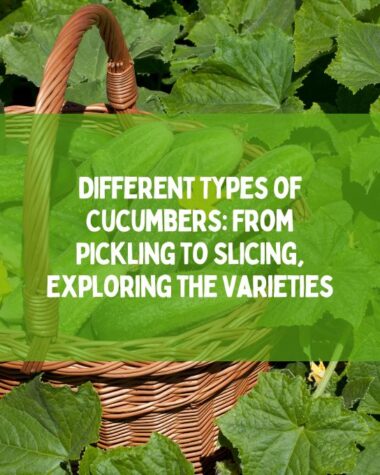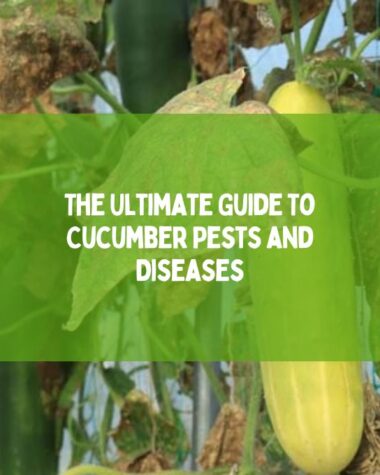To train cucumber plants, choose a good variety, put up a support structure, prune them often, and keep an eye out for pests and diseases. Through the vertical growth of cucumber plants, you can increase yields, improve fruit quality, and save valuable garden space.
As a passionate gardener, I love growing cucumbers in my backyard garden. However, I quickly learned that allowing the cucumber plants to sprawl along the ground can take up valuable space and increase the risk of disease.
That’s when I learned how helpful it can be to train cucumber plants to grow up a trellis or other structure. With this simple gardening technique, I was able to save space, improve air circulation, and increase yields.
In this article, I’ll share with you my step-by-step guide for training cucumber plants, as well as important tips for success.
Let’s begin!
What Are Essential Steps Required Training For Training Cucumber Plants?

Training cucumber plants is important for any gardener who wants to make the most of their space and get more from their plants.
Here are a few key steps you can use to train your cucumber plants to grow vertically.
Choose a support structure
When choosing a support structure for your cucumber plants, it’s important to select one that is sturdy and can handle the weight of the vines and fruits. Popular support structures include trellises, cages, and stakes.
- Trellises are often made from wood or metal and consist of a series of horizontal bars spaced a few inches apart.
- Cages are made from wire or mesh and provide a more enclosed structure for the vines to grow around.
- Stakes are simply tall poles that can be used to prop up the vines.
Choose a support structure that fits your garden space and the size of your cucumber plants.
Plant cucumber seedlings
Cucumber seedlings should be planted at the base of the support structure, spaced 12-24 inches apart. Make sure to plant them in nutrient-rich soil and provide plenty of water. Cucumbers need plenty of sunlight and warmth. Therefore choose a location that receives at least six hours of direct sunlight per day.
Start training the cucumber plants
Once your cucumber plants have grown to about 12 inches in height, it’s time to start training them. Gently wrap the main stem of the plant around the support structure and tie it loosely with twine or ties.
As the plant grows, continue to wrap the vines around the support structure and secure them in place using ties or twine. This will encourage the vines to grow vertically, which will help save space and improve air circulation around the plant.
Related Reading:
- Japanese Cucumber Info: How to Grow Japanese Cucumber From Seed?
- Bush Cucumbers: The Complete Guide to Growing and Enjoying Different Varieties
- How To Grow Lemon Cucumber Plant In Your Vegetable Garden?
Secure the vines to the support structure
As the cucumber plant grows, it’s important to regularly check the vines and secure them to the support structure. Use twine or ties to gently tie the vines to the structure, making sure not to tie them too tightly. This will prevent the vines from falling over or breaking under the weight of the fruits.
Check regularly
Check on the cucumber plants often, and if the vines aren’t growing straight, move them. Make sure to water the cucumber plants regularly and provide them with the nutrients they need to grow healthy and strong. Monitor the plants for signs of disease or pests, and take action immediately if you notice any issues.
These instructions will help you train your cucumber plants to produce an abundant crop of tasty, healthy cucumbers.
Why Train Cucumber Plants? Reasons and Benefits
Training cucumber plants is an essential gardening technique that offers several benefits. Here are some reasons why you should consider training your cucumber plants:
- Space-saving: By training cucumber plants to grow vertically on a trellis or other support structure, you can save valuable garden space. This is especially important if you have a small garden or limited growing space.
- Improved air circulation: When cucumber vines are left to grow along the ground, they can become dense and overcrowded. This can lead to poor air circulation, which increases the risk of fungal diseases. By training the vines to grow vertically, they can get more air and help keep diseases at bay.
- Easier harvesting: When cucumber vines are trained to grow vertically, the fruits are easier to see and harvest. This can save time and effort, especially if you have a large garden or a lot of plants to tend to.
- Better quality fruits: Cucumbers that are grown vertically tend to have better quality fruits. This is because the fruits are not resting on the ground, which can lead to uneven growth and discoloration.
- Increased yields: Training cucumber plants to grow vertically can also increase yields. This is because the vines are able to grow longer and produce more fruits when they are trained to climb.
Training cucumber plants is an effective method for maximizing space efficiency, enhancing air circulation, simplifying harvesting, enhancing fruit quality, and expanding harvests. Spending some time training your cucumber plants will reward you with an abundance of juicy, nutritious cucumbers.
Related Reading:
- Tomato Stakes Vs Cages: Which is Better for Support?
- How to Grow Cucumbers From a Cucumber?
- How to Grow Chantenay Carrots?
- The Ultimate Guide to Growing Eggplant Seedlings: Planting and Caring Tips
- How To Grow Mini Pumpkins From Seeds?
Conclusion
Training cucumber plants is a simple and effective way to make the most of the space in your garden, improve airflow, make harvesting easier, and get more cucumbers. By training the plants early, pruning them often, and keeping an eye out for pests and diseases, you can successfully train your cucumber plants to climb and get a lot of tasty, healthy cucumbers from them.







